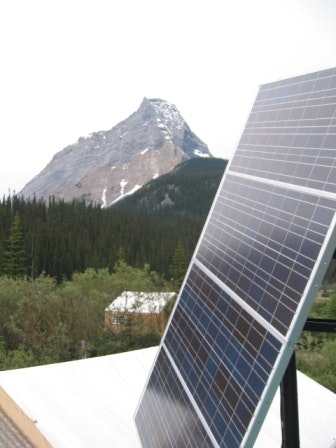If you are wondering when we will start running out of oil, you’re a bit late. In the U.S, oil production peaked in 1970. Globally, we hit our peak in 2005. We are entering the period of relentless decline that will result in
dramatic political and economic changes. We’ve already seen how the recession’s recovery was made far worse by higher oil prices.

Public Domain Image: Public Domain
The other problem is coal. Coal seems to be a limitless resource, though a vocal minority suggest it has already peaked as well. The problem with coal is that it produces 49% of our electricity demands but also generates strip-mines, leaches out toxic chemicals and is the number one source of
greenhouse gases. Still, most of the government funding for alternative fuels is going for cleaner burning coal and oil derivatives like ethanol.
Even if our fossil fuels have peaked, that doesn’t mean we are going to run out anytime soon. It may not even be this century, but price pressure will eventually increase to the point where it costs too much to extract any more. Then the energy wars will begin because so much of the world
depends on fossil fuels and consumption is ballooning along with the population.
Something is inevitably going to replace fossil fuels as our main energy source. In the meantime, the competition for resources is not going to be pretty. Let’s take a look at the contenders, and what they have to contend with:
Solar is the golden child of the alternative energy movement, but it’s a long way from producing anywhere near the 72% of energy currently provided by fossil fuels. Fuel cells for cars, charged by solar panels, show the most promise for curing our oil addiction.
Problem: Too expensive and not enough output remain the two greatest obstacles to more general adoption.
Future: Economies of scale will be needed until collection technology improves or fossil fuel prices rise enough to make solar practical.
Atomic makes us most of the rest of our energy needs at 20% of production. There has been a moratorium on new power plants in the U.S. for the past 30 years after the movie The China Syndrome frightened everyone out of the market. A few are currently in the planning stages but they are controversial and none will come online for decades at the soonest.
Problem: You have probably heard about nuclear waste that remains deadly for as long as you can imagine.
Future: The U.S. Department of Energy estimates that oil and atomic combined are expected to produce 85% of our energy needs through 2030.
Hydro-electric provides for 6% of our national consumption, rounding out the top three. They don’t pollute much but are expensive, destroy habitats and displace populations.
Problem: Spots for dams on major rivers are rare and, as the song says, all of the good ones are taken.
Future: The only future is in micro-hydro plants to supply energy for small communities. These will be the pawns of the coming water wars as the nation’s water supplies dry up.
Wind is responsible for 2% of U.S. energy. Government incentives are driving development. 1 megawatt of wind offsets 2,600 tons of carbon dioxide and saves 1.3 billion gallons of water over oil production. 38 states have wind farms now.
Problem: energy storage is essentially non-existent and output is to unpredictable.
Future: Great as a filler and backup, but can’t supply enough by itself.
The Unknown includes geothermic, hydrogen fuel cells, cold fusion, bursting underwater bubbles and quantum zero point energy, which is crazier than cold fusion but still has a few companies spending big money on it. Geothermic holds the most promise under current technology. Iceland is able to produce 53% of their energy requirements this way, but at the cost of living on top of an active volcano.
Problem: Wildly impractical or mostly impossible.
Future: The Unknown may be our only hope.
VestaTrader is a social trading platform where users can learn daily trading cues from each other, VestaTrader and other trading experts.
From The VestaTrader Blog, post Energy for the Future





